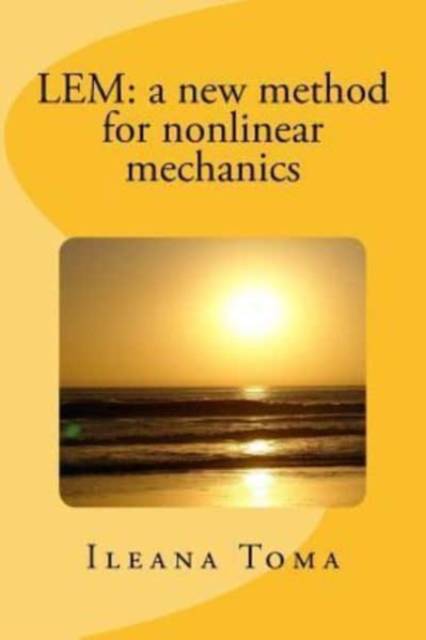
- Retrait gratuit dans votre magasin Club
- 7.000.000 titres dans notre catalogue
- Payer en toute sécurité
- Toujours un magasin près de chez vous
- Retrait gratuit dans votre magasin Club
- 7.000.0000 titres dans notre catalogue
- Payer en toute sécurité
- Toujours un magasin près de chez vous
Description
The Linear Equivalence Method - briefly, LEM - is author's original method. Unlike what is commonly understood by linearization, LEM establishes a one-to-one correspondence between the solutions of nonlinear and linear ordinary differential equations and systems, by means of an exponential mapping - author's idea. This justifies the denomination of LEM - the Linear Equivalence Method. LEM provides the users with an efficient and powerful tool that enables the free application of the methods of the linear, much easier handled and better founded that those of the nonlinear.This is why the applications of LEM cover a large area of domains and problems: from nonlinear mechanics (the nonlinear deformation of straight bars, the buckling of a straight bar, the nonlinear double pendulum, neo-Hookean or Ogden type models) to engineering (the motion of relativistic charged particles), chemistry (the Belousov-Zhabotinskij chemical reaction), biology (the Lotka-Volterra system), Fliess series, Lie derivatives, theory of graphs, theory of numbers (golden number) etc. This book presents LEM and its specific techniques and algorithms deduced by using the linear frame. It also emphasizes LEM's most pertinent applications, as mentioned above.It is addressed to all the specialists - in mathematics and/or in other domains as mechanics, engineering, physics, chemistry, biology, etc. - who deal with nonlinear ordinary differential equations and who are searching for an efficient tool to get solutions, both numerically and analytically. The understanding of the method requires only elementary notions of differential equations, analysis and algebra; in this respect, it should be mentioned that LEM was also applied by students in their graduation projects.
Spécifications
Parties prenantes
- Auteur(s) :
- Editeur:
Contenu
- Nombre de pages :
- 356
- Langue:
- Anglais
Caractéristiques
- EAN:
- 9781514393178
- Date de parution :
- 10-08-15
- Format:
- Livre broché
- Format numérique:
- Trade paperback (VS)
- Dimensions :
- 152 mm x 229 mm
- Poids :
- 476 g

Les avis
Nous publions uniquement les avis qui respectent les conditions requises. Consultez nos conditions pour les avis.






